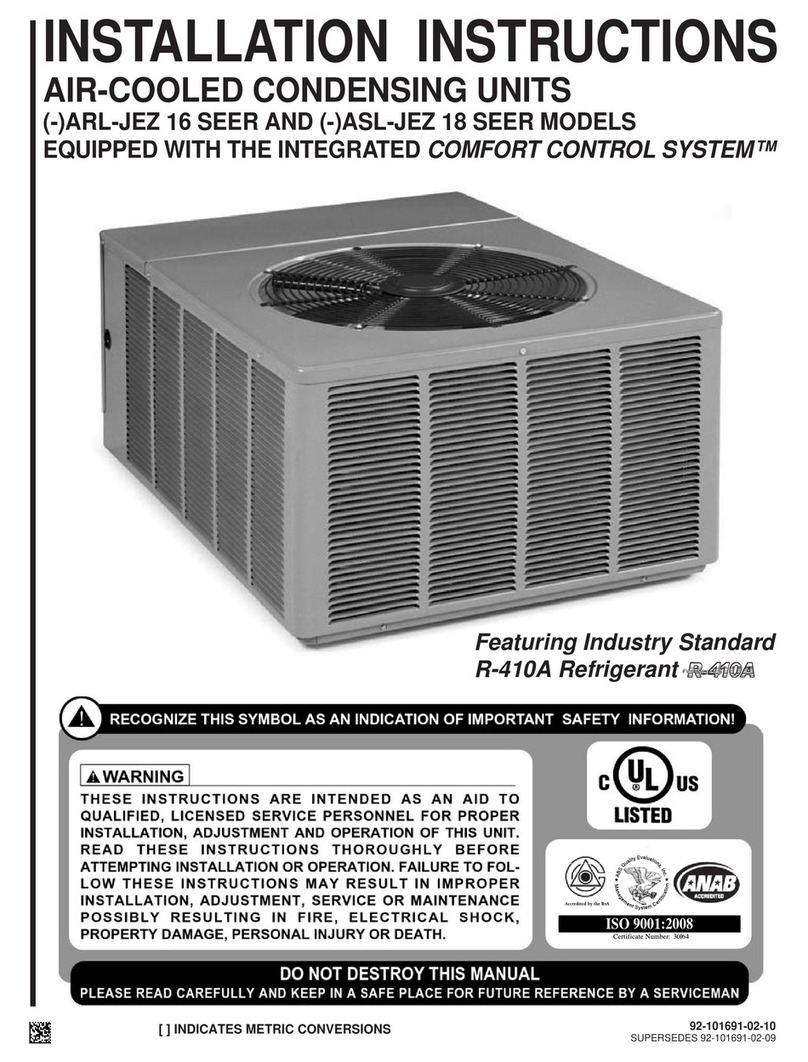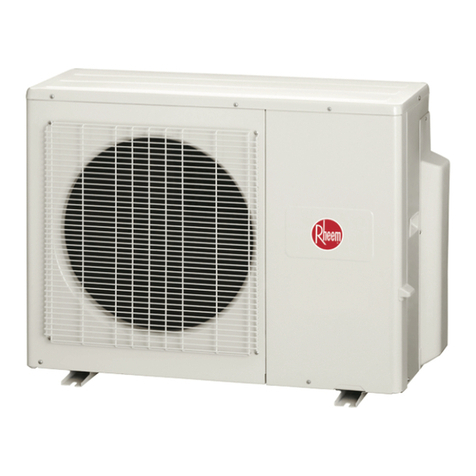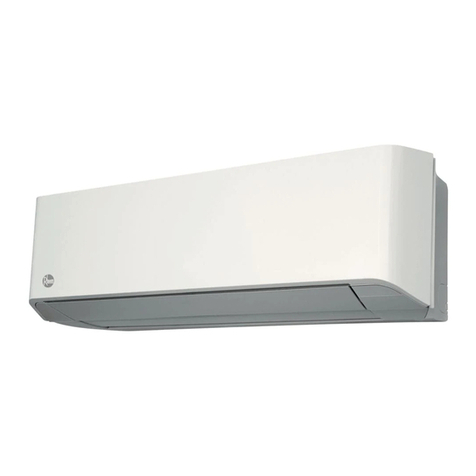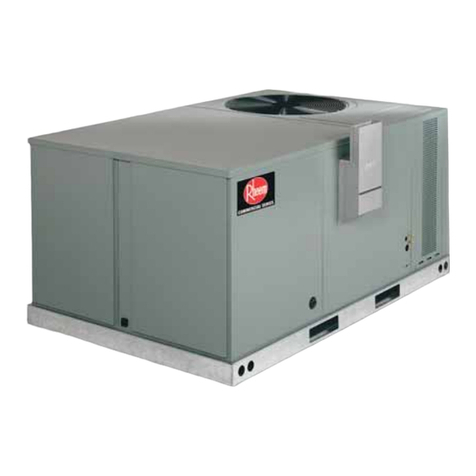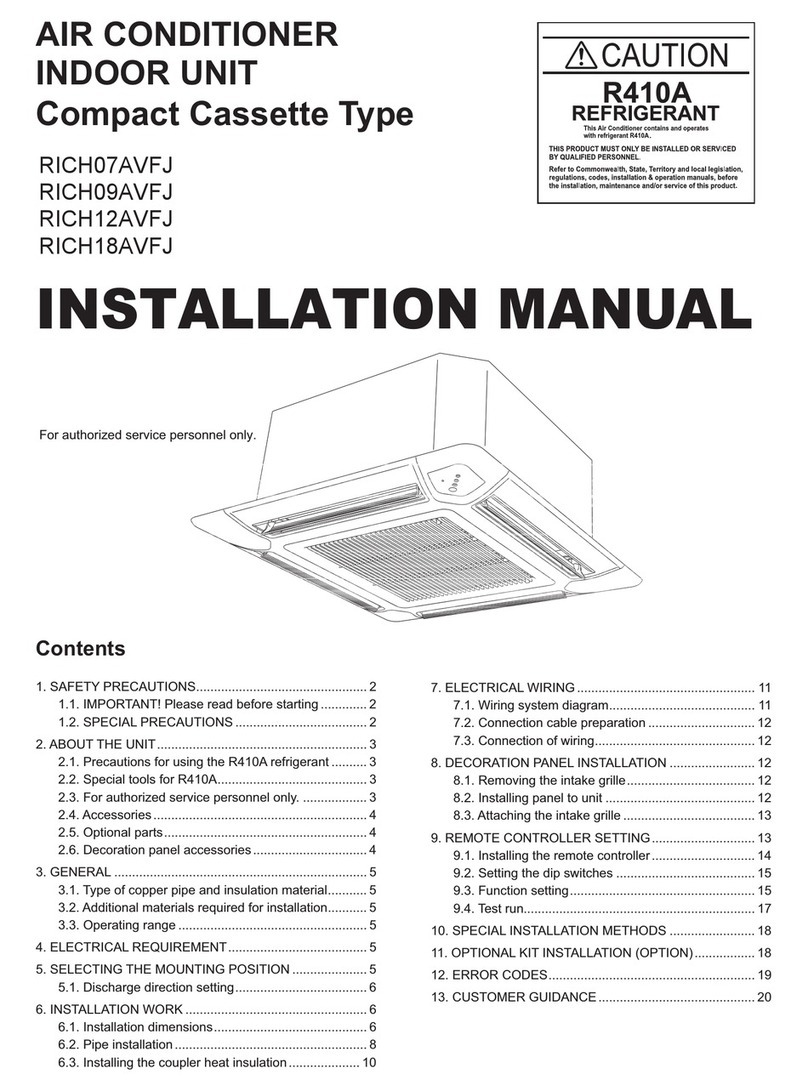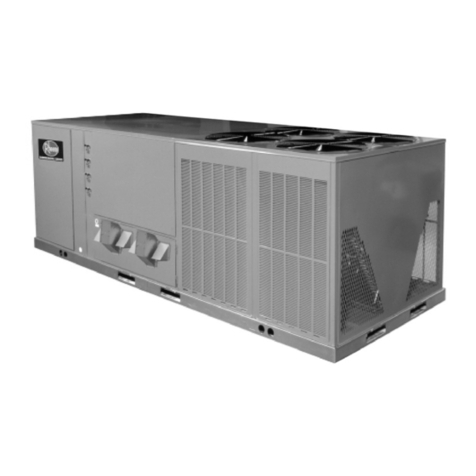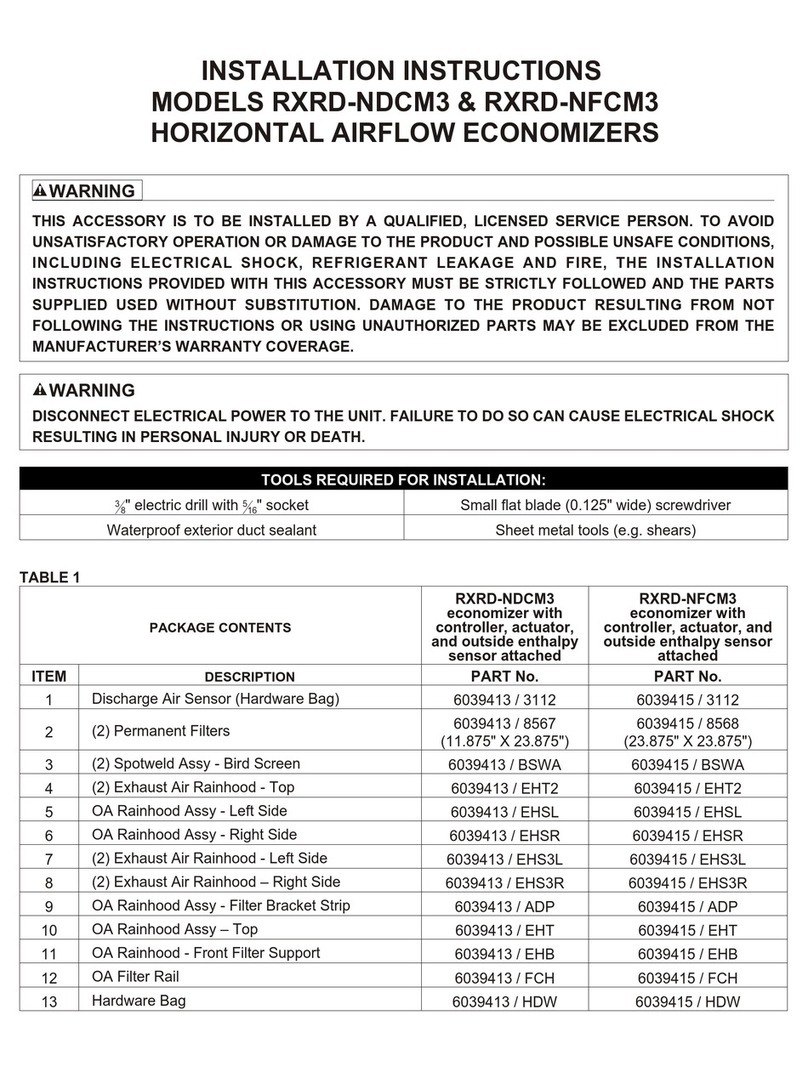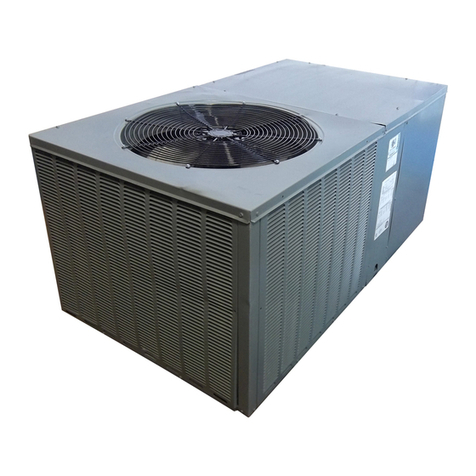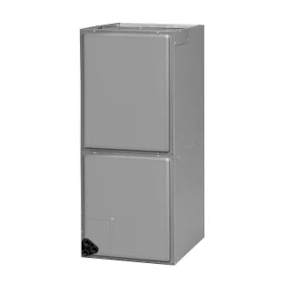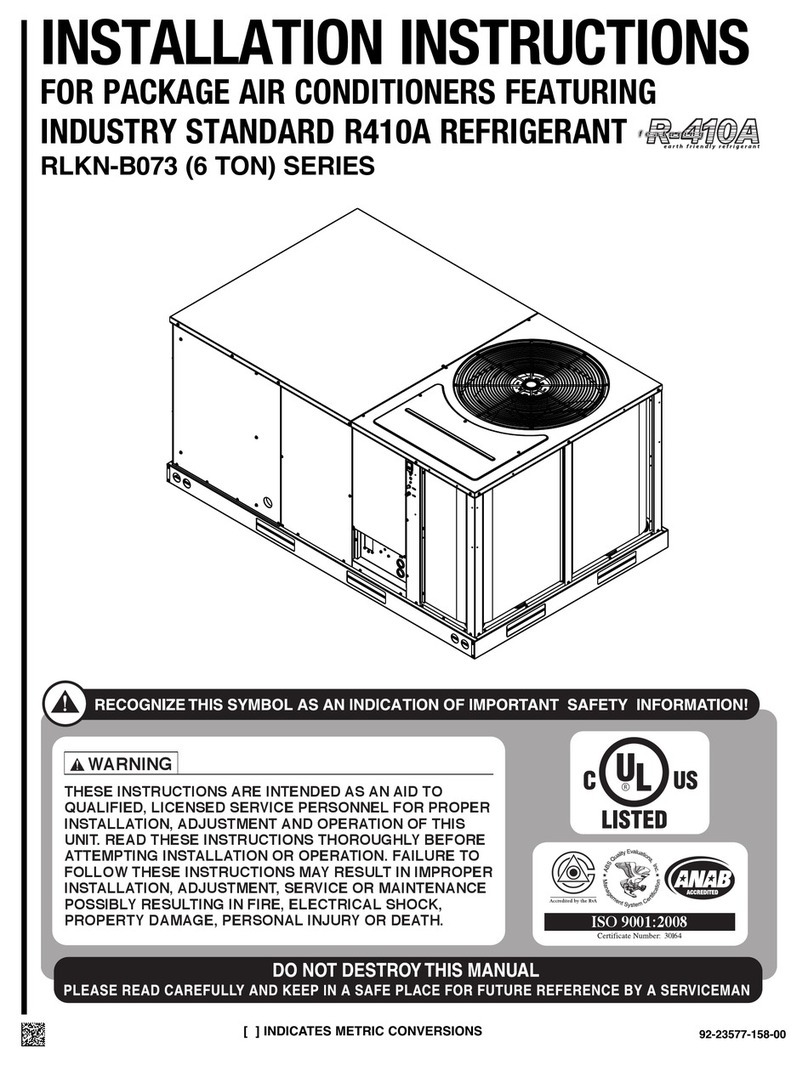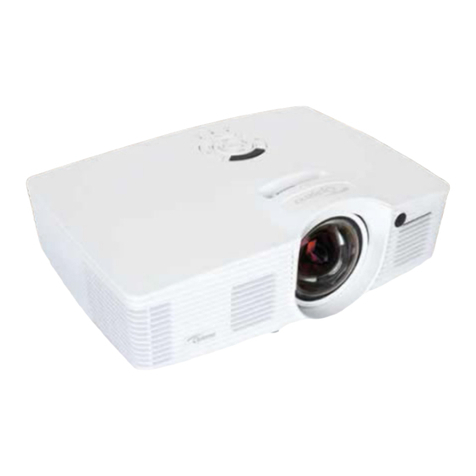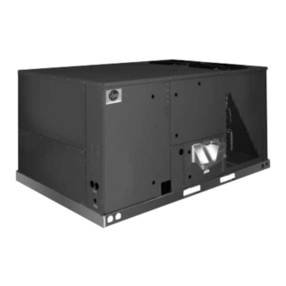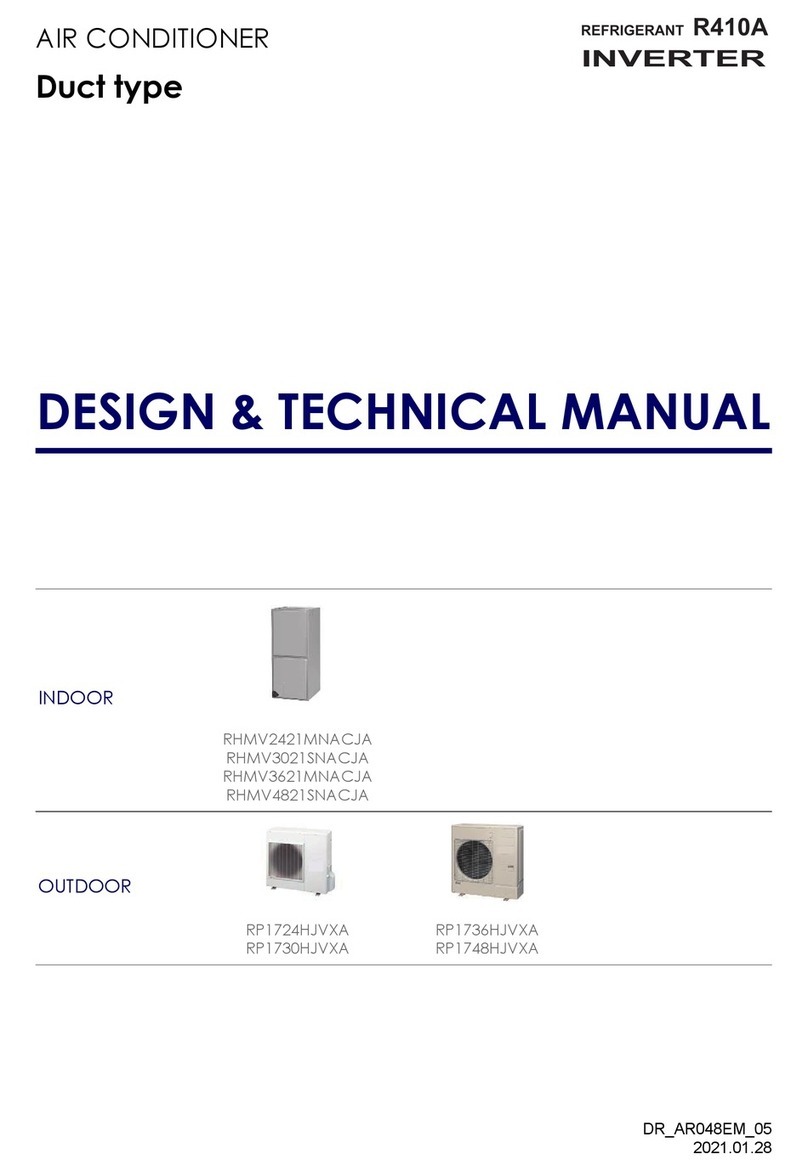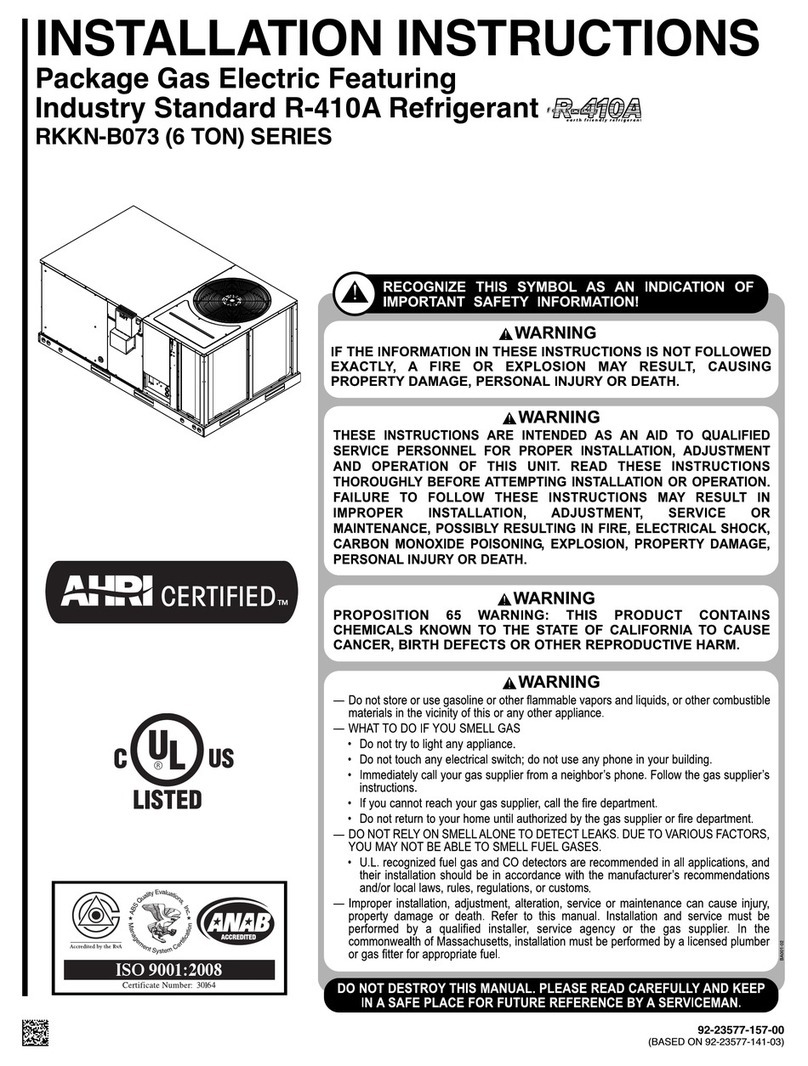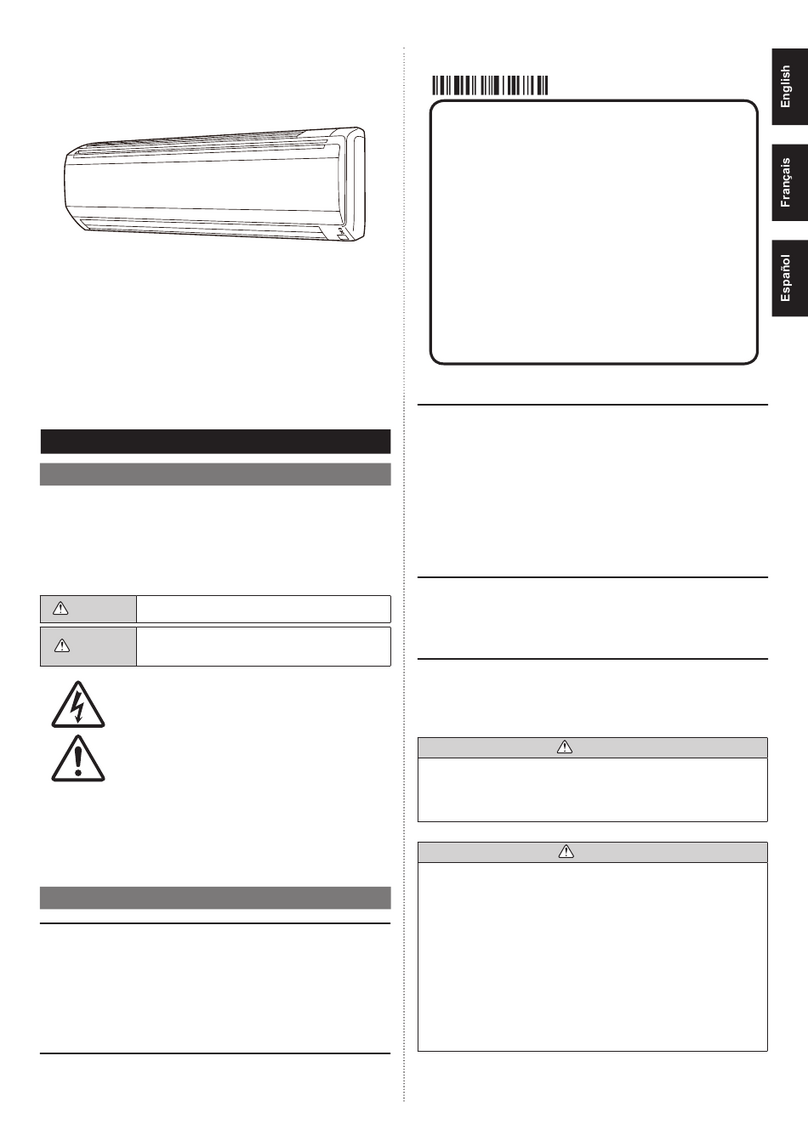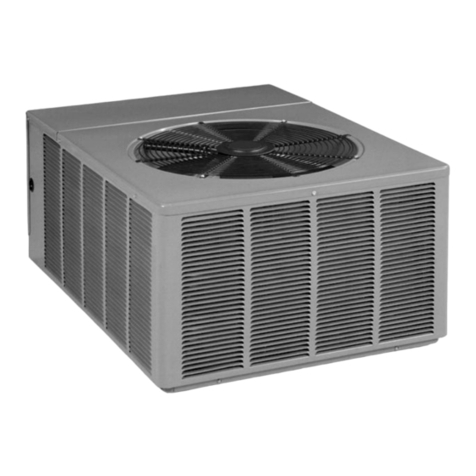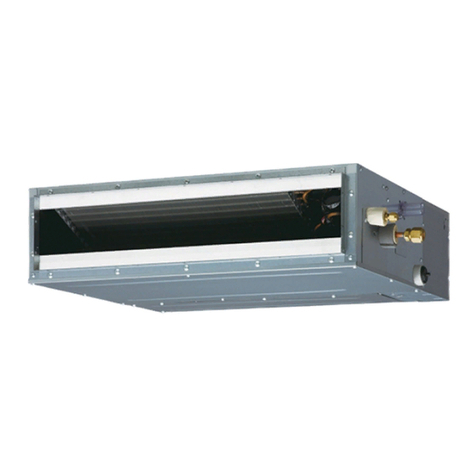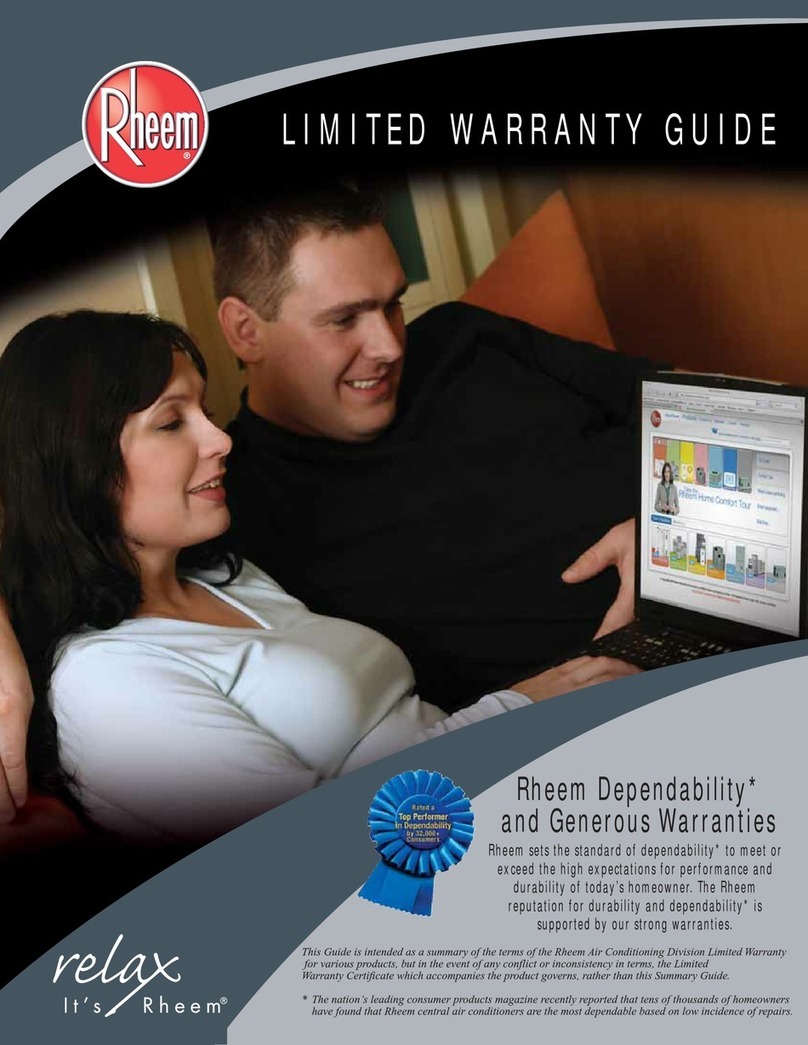
This booklet contains the installation and operating instructions for your combination gas heat-
ing/electric cooling unit. There are some precautions that should be taken to derive maximum
satisfaction from it. Improper installation can result in unsatisfactory operation or dangerous
conditions.
Read this booklet and any instructions packaged with separate equipment required to make up
the system prior to installation. ive this booklet to the owner and explain its provisions. The
owner should retain this booklet for future reference.
CHECKING PRODUCT RECEIVED
Upon receiving the unit, inspect it for any damage from shipment. Claims for damage, either
shipping or concealed, should be filed immediately with the shipping company. IMPORTANT:
Check the unit model number, heating size, electrical characteristics, and accessories to deter-
mine if they are correct.
I. SPECIFICATIONS
A. GENERAL
The Combination as Heating/Electric Cooling Rooftops are available in 150,000 and 225,000
BTUH heating input. Cooling capacities are 7.5, 10 or 12.5 nominal tons. Units are convertible
from bottom supply and return to side supply and return by relocation of supply and return air
cover panels. See cover installation detail.
The units are weatherized for mounting outside of the building.
The information on the rating plate is in compliance with the FTC and DOE rating for single
phase units. The following information is for three phase units which are not covered under
the DOE certification program.
1. The energy consumption of the ignition system used with this unit is 175 watts.
2. The efficiency rating of this unit is a product thermal efficiency rating determined under
continuous operating conditions independent of any installed system.
B. MAJOR COMPONENTS
The typical unit includes a hermetically-sealed refrigerating system consisting of a scroll com-
pressor, condenser coil, evaporator coil with fixed restrictor assembly or TXV, a circulation air
blower, a condenser fan, a heat exchanger assembly, gas burner and control assembly, com-
bustion air motor and fan, and all necessary internal electrical wiring. The cooling systems of
these units are factory-evacuated, charged and performance tested. Refrigerant amount and
type are indicated on rating plate.
C. R-410A REFRIGERANT
All units are factory charged with R-410A refrigerant.
1. Specifications of R-410A:
Application: R-410A is not a drop-in replacement for R-22;equipment designs must accom-
modate its higher pressures. It cannot be retrofitted into R-22 units.
Pressure: The pressure of R-410A is approximately 60% (1.6 times) greater than R-22.
Recovery and recycle equipment, pumps, hoses, and the like need to have design pressure rat-
ings appropriate for R-410A. Manifold sets need to range up to 800 psig high-side and 250 psig
low-side with a 550 psig low-side retard. Hoses need to have a service pressure rating of 800
psig. Recovery cylinders need to have a 400 psig service pressure rating. DOT 4BA400 or DOT
BW400.
Combustibility: At pressures above 1 atmosphere, mixture of R-410A and air can become com-
bustible. R-410A and air should never be mixed in tanks or supply lines, or be allowed to
accumulate in storage tanks. Leak checking should never be done with a mixture of R-
410A and air. Leak checking can be performed safely with nitrogen or a mixture of R-410A and
nitrogen.
!WARNING
T E MANUFACTURER’S WARRAN-
TY DOES NOT COVER ANY DAM-
AGE OR DEFECT TO T E AIR CON-
DITIONER CAUSED BY T E
ATTAC MENT OR USE OF ANY
COMPONENTS, ACCESSORIES OR
DEVICES (OT ER T AN T OSE
AUT ORIZED BY T E MANUFAC-
TURER) INTO, ONTO OR IN CON-
JUNCTION WIT T E AIR CONDI-
TIONER. YOU S OULD BE AWARE
T AT T E USE OF UNAUT ORIZED
COMPONENTS, ACCESSORIES OR
DEVICES MAY ADVERSELY
AFFECT T E OPERATION OF T E
AIR CONDITIONER AND MAY ALSO
ENDANGER LIFE AND PROPERTY.
T E MANUFACTURER DISCLAIMS
ANY RESPONSIBILITY FOR SUC
LOSS OR INJURY RESULTING
FROM T E USE OF SUC UNAU-
T ORIZED COMPONENTS, ACCES-
SORIES OR DEVICES.
!WARNING
UNITS ARE NOT DESIGN CERTIFIED TO BE INSTALLED INSIDE T E STRUCTURE.
DOING SO CAN CAUSE INADEQUATE UNIT PERFORMANCE AS WELL AS PROPER-
TY DAMAGE AND CARBON MONOXIDE POISONING RESULTING IN PERSONAL
INJURY OR DEAT .
5
